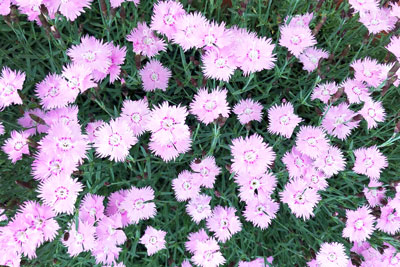Bath’s Hardy Pinks Love Texas
The website of the highly respected Missouri Botanical Garden pretty well says it all: “Bath’s Pinks tolerate heat and humidity (as well as some drought) better than most other dianthus.”
They also list it as hardy to Zones 3-9. Oh, my goodness! That’s pretty much all of America, and it’s certainly all of Texas (except maybe the Deepest South Texas).

The name “pinks” is generally thought to have originated because the ends of the petals of most carnations and their relatives look like they’ve been trimmed with pinking shears.
Discovered by, and named for Jane Bath of Stone Mountain, GA, this is a selection of Dianthus gratianopolitanus (cheddar pinks). Curiously, that species name reminded me of some of the names we’re seeing in the news lately from the Ukraine. This species parent of Bath’s Pinks is native from the Cheddar Gorge in England to Ukraine.
Bath’s Pink dianthus is a tufting grower, meaning it forms clumps that grow together into a solid mass of blue-gray foliage. It’s actually quite handsome even when it’s not blooming.
Use it as a floral border plant or tumbling over a masonry retaining wall. Put it near a path or a walk where you can take in that wonderful clove-like aroma. It’s one of the favorite fragrances of gardeners all over the world.

Details on Bath’s hardy pinks…
• Does well in full or part sun.
• Does best in well-prepared garden soil that’s high in organic matter and kept uniformly moist, but never soggy for prolonged periods.
• Winter-hardy from Texas clear into Canada.
• Summer-hardy from Canada clear into Texas!
• Blue-green, fine-textured foliage is attractive year-round.
• Flowers in mid-spring with single lavender-pink, quarter-sized blooms.
• Extremely fragrant; clove-like aroma.
• Grows to 6 or 7 inches tall when in bloom.
• Propagated by division (not always easy, but try in spring or fall). Stems often root where they touch loose soil.
• Often found in better nurseries, but supplies sell out quickly. Call ahead and shop frequently. Also sold online.
